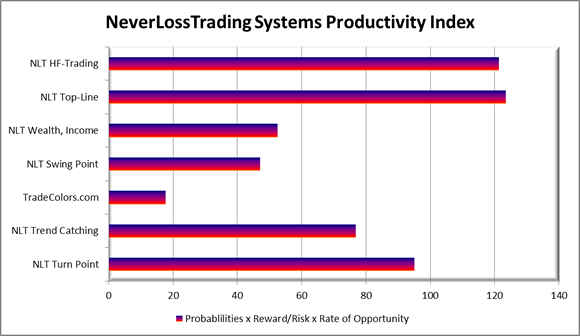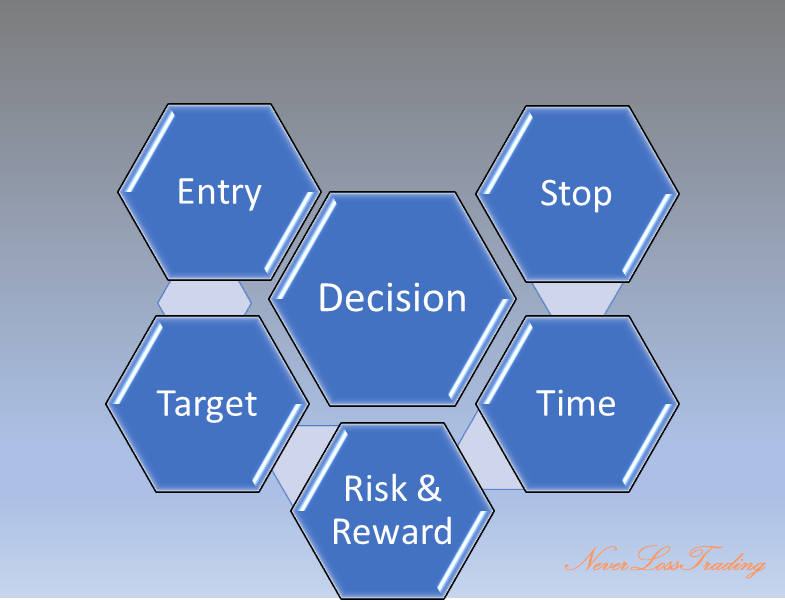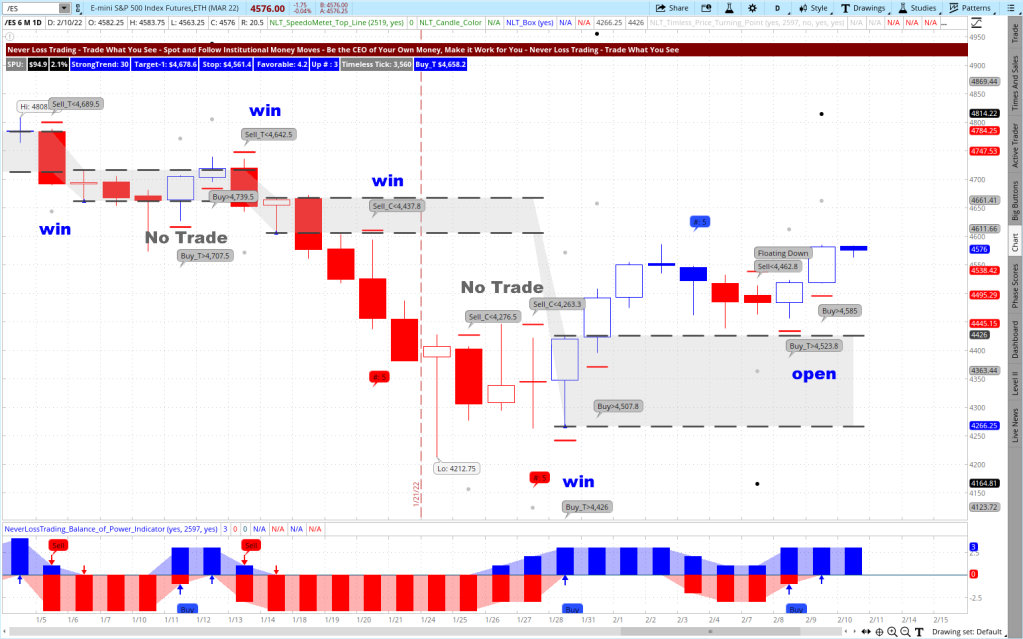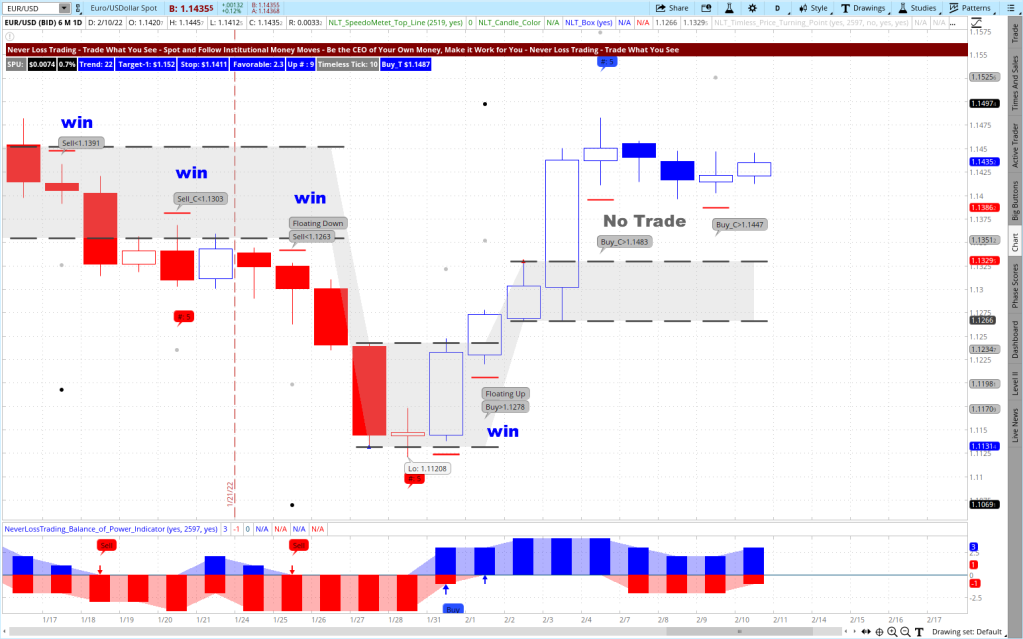Summary: Successful traders bring risk and reward in a meaningful balance to produce long-term income from the financial market—experience how this can be done by reading on.
What is your return on risk (RoR)?
Yes, you read right, return on risk, not capital. However, let us compare the two formulas:
- Return on Capital (ROC) = Profit / The Invested Capital
- Return on Risk (RoR) = Expected Profit / Assumed maximum Risk
Do you see the big difference between the two?

ROC takes past data and compares the outcome of the business or trading endeavor and reports in Hindside how things were.
By calculating RoR, you forecast two dimensions:
- A forecast of the expected profit means that you or your system must specify the desired outcome of each trade and its probability.
- Forecast the maximum expected risk to take to bring the trade to target without getting stopped.
Boiling it down: as a trader, you are a probability thinker, and you only put your money at risk when there is a high probable chance for it to produce the desired return. Still, this does not help you define how much risk you can accept and assume its probability.
We work with high probability algorithmic setups and aim for an attainment rate or probability of winning ≥ 65%.
So now, let us make a simple breakeven calculation of the maximum risk you can take in a trade when your expected outcome or profit is $1 at a 65% chance of winning.
| Breakeven = | Winning – Losing | = 0 |
| Breakeven = | $1 * 0.65 – 0.35 * Max Risk | = 0 |
| Max Risk = | $1 * 0.65 / 0.35 | = $1.86 |
What does $1.86 mean for you as a trader?
When you operate with a 65% winning system, your max risk to accept is 1.86-times the reward, but you only reach breakeven at this point.
We casually advise our clients to accept a maximum of 1.2 to 1.3-times risk per dollar expected reward. Hence, when you operate with a high probability system and dedicate yourself to following this rule, you have an edge as a retail trader to produce constant income from the financial markets.
The biggest problem is how to specify the dollar target of a trade?
A general maximum principle of achieving a maximum output for a minimum risk does not work in trading, as it does not work in economics either:
- You calculate an economic maximum by taking a base resource and calculating the output you can achieve by evaluating alternatives.
- A financial minimum specifies a given output and calculates the choice with the lowest resource usage.
For trading, this means:
- Know and understand your system probability. Unfortunately, most retail traders work with systems or ideas far from high probability and celebrate their random wins.
- Let your system define the expected output of the trade and check if the setup allows for operating with an adequate risk gauge to bring the trade to target.
Why is there a risk gauge?
Price change has a natural statistical distribution, and when you set too tight stops, you get stopped before bringing your trade to target.
In case of wide stops, like 2-times profit, you risk too much, and you will not make long-term money.
It sounds like you are between a rock and a hard place.
Yes, trading is not easy, but it is learnable.
Let your system and chart tell when to buy or sell and trade what you see, not what you assume.
The price change results from a shift in supply and demand. Thus, a system can measure those and extrapolate how far a price movement most likely expands: This is precisely what our indicators and algorithms calculate and share on the chart with you.
Yes, trading is a numbers game, and you better comply with what works more often to come to profitability. The driver of your P&L is trading with the odds in your favor: Here is the price move model we follow, and it considers all we said above:
NeverLossTrading Price Move Model

Theory: Key asset holders will have a solid need to re-balance their inventories. Thus, at a particular price expansion, they will either float- or shorten supply, which will result in an opposite directional price move that will then take away from our profits. Knowing this, we pre-calculate how far the expected price move will reach, and there we take profit, assuming it will retrace or reverse after.
Hence, we let the market and institutions appraise the asset price journey and latch on, entering and exiting positions faster than institutions can.
Our brand name derives from the concept of repairing a trade instead of accepting a stop loss; however, Never Stop Loss Trading was a bit lengthy.
TradeColors.com is our introductory system to high probability trading. We always allow for upgrades; you only pay the difference if you start with TradeColors.com and upgrade after.
Many of our clients purchase more than one system: Our systems are productivity tools, and by combining them, you produce a higher participation rate and higher returns.

Our tool to calculate the expected price move to target is the SPU = Speed Unit, and it indicates how far a price move shall reach until it comes to an end.
With our systems, you can operate with conditional buy-stop and sell-stop OCO orders (one-cancels-the-other). Without the need to be in front of your computer for the orders to execute. You enter by price thresholds, ensuring that other market participants have the same directional assumption as you do and exit at the SPU target or adjust the trade at the stop.

By a change in the frequency and amplitude of the price movement over time, we specify indications to act on high probability price turning points, applying mechanical rules rather than leaving room for interpretation.
We cover all asset classes: Stocks, Options, Futures, FOREX.
As a retail trader, you have multiple opportunities for:
- Day trading (opening and closing positions the same day)
- Swing trading (holding position for multiple days)
- Longer-term investing (holding positions for weeks and months)
You can act with a high probability price move model on key price turning points based on clearly defined risk-limiting strategies.
With the help of our systems, we help retail traders to decide at trade entry for the five significant challenges they face to prevent the common mistakes often made:
- Trade entry decisions (when to trade)
- Exit decisions (where to take profit)
- Stops (where to place them)
- Maximum time in a trade (specified by the signal)
- Risk to reward (only trade at favorable setups)

Make a change to your trading results, and we will find out which of our systems suits you best.
contact@NeverLossTrading.com Subj.: Demo.
We are happy to hear back from you.
Volatility in the financial markets is up, and time-based price moves bury a higher risk than before. So we developed the NeverLossTrading Timeless Concept, where we dissect hefty potential price moves into sub increments to reduce the risk unit per trade. Here are some examples of what our system can do for you as a day trader or swing trader.
- Stock Examples
By the NLT Timeless Concept, instead of drawing price happening over time, we trade for price changes and with that prevent long candles with unfavorable risk-reward setups:
AAPL NLT Timeless Trend Catching Chart, Jan. 24, 2022

A price threshold is formulated for every trade situation: buy > and sell <. This way, you can operate with buy-stop and sell-stop orders and only enter a trade when the threshold is surpassed in the price movement of the next candle. When you add up winning and losing trades, you see an example of high probability trading where we strive for winning 65% and above.
The chart shows a pure mechanical appraisal where every situation is traded. In the mentorship, you will learn the rules of how to pick higher over the lower probable cases.
Let us now take a time-based example for swing trading: holding a position between one and ten days.
AAPL NLT Daily Trend Catching Chart, Jan./Feb., 2022

The chart shows multiple situations from January 4 to February 9, 2022, where it reads no trade: A signal spelled out a trading opportunity; however, the direction was not confirmed in the price movement of the next candle and such, no trade got accepted.
If you trade from an IRA, you would not be able to follow the short signals on the chart (SEC regulations do not allow short selling in IRAs). However, we teach appropriate Options trading strategies that you can profit from when stock prices fall.
- Futures Trading
The E-Mini S&P 500 Futures contract is an instrument many retail and professional traders operate with. Hence, let us pick a day trading situation and a longer-term trade setup:
NLT Timeless Trend Catching Chart for the E-Mini S&P 500

The chart shows multiple buy or sell opportunities:
- Each opportunity formulates as a buy > or sell < a system-defined price threshold, allowing you to enter the trade direction only when the direction is confirmed.
- Each price change ends at the target (dot on the chart) or the red cross line, indicating where to stop.
- The system probability is ≥ 65%. The difference of entry to stop is about 1.2-times the difference of entry to the target. In the chosen example, entry to target was $350 and such the risk was $420. Adding up three trades: two winners ($700) and one losing trade ($420), gives you a positive expectation of $280 per contract on a set of three trades.
Daily NLT Trend Catching Chart for E-Mini S&P 500

From left to right, you see:
- A trade to the downside, breaking the price containment NLT Box and coming to target: gray dot.
- Two trades with “No Trade” indication: on the first trade, the target was cut short by a box line – no trade. The second signal was not confirmed.
- What follows are two winning trades that came to target.
- Then two “No Trades” where the threshold did not get surpassed in the next candle.
- A winning trade on Buy_T> $4,426 that came to target three candles after entry.
- An open trade that did not reach its target or stop. We set the stop by the red crossbar on the chart.
- FOREX
The most favored FOREX pair is the EUR/USD. There are multiple ways to participate in the price development, and we share a day trading and swing trading example:
Timeless NLT Day Trading Chart for EUR/USD

From left to right:
- No Trade, by NLT Box Line cutting the price move to target short
- Wining long trade to target
- Winning short trade, followed by another winning short trade
- A losing short trade
- Two winning long trades.
Daily NLT Trend Catching Chart for EUR/USD

When we sparked your interest and you want to come on board with our systems and strategies, we invite you to a personal session to see how our systems work life.
contact@NeverLossTrading.com Subj.: Demo.
We are more than 10-years in the trading education business, teaching one-on-one at your best available days and times, and are ready to share our experiences of helping private investors to build their trading business. Trading is not a typical career, and you best learn from those who are long-term in this business to cope with the rollercoaster of the financial markets. We are here to help and provide feedback on what you might be doing right or wrong.
Make a change to your trading results, and we will find out which of our systems suits you best.
Stay informed and subscribe to our free market updates.
We are happy to hear back from you,
Thomas Barmann (inventor and founder of NeverLossTrading)
Disclaimer, Terms and Conditions, Privacy | Customer Support


No comments:
Post a Comment